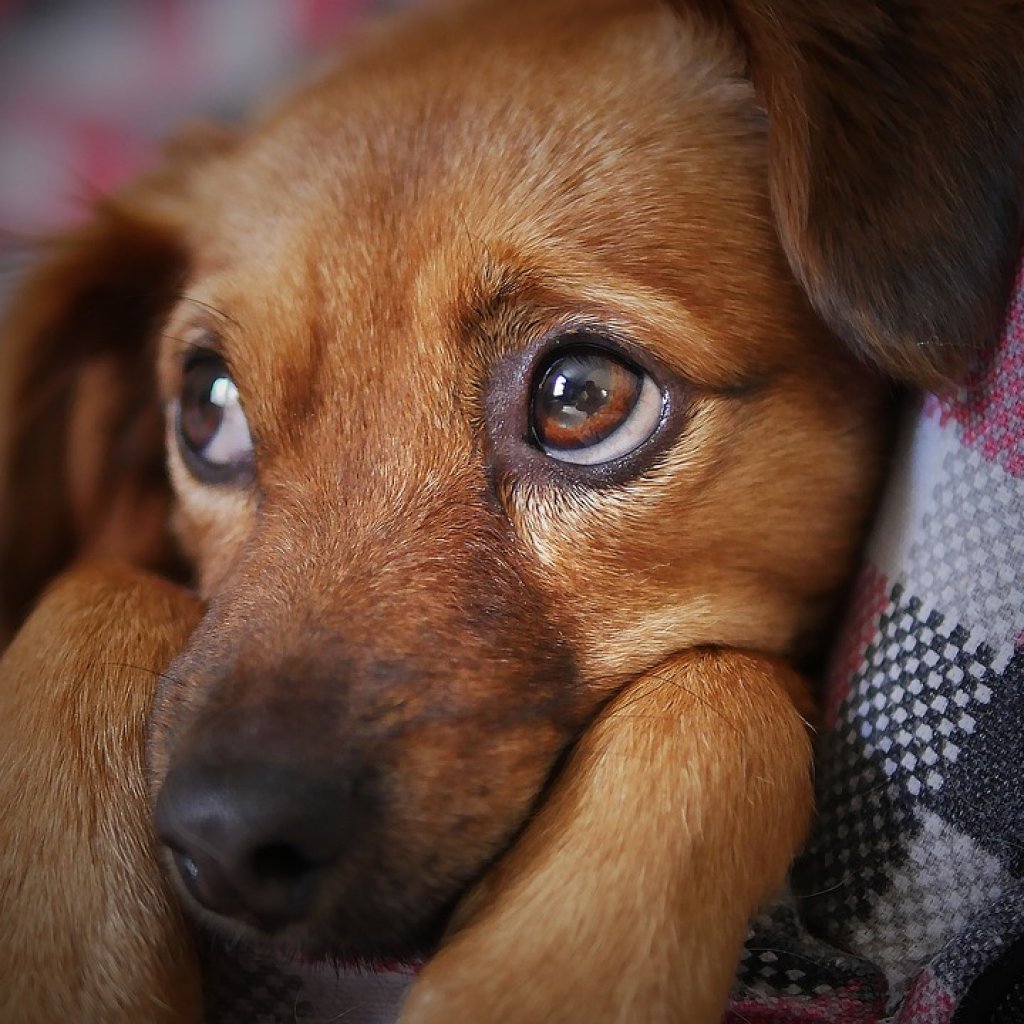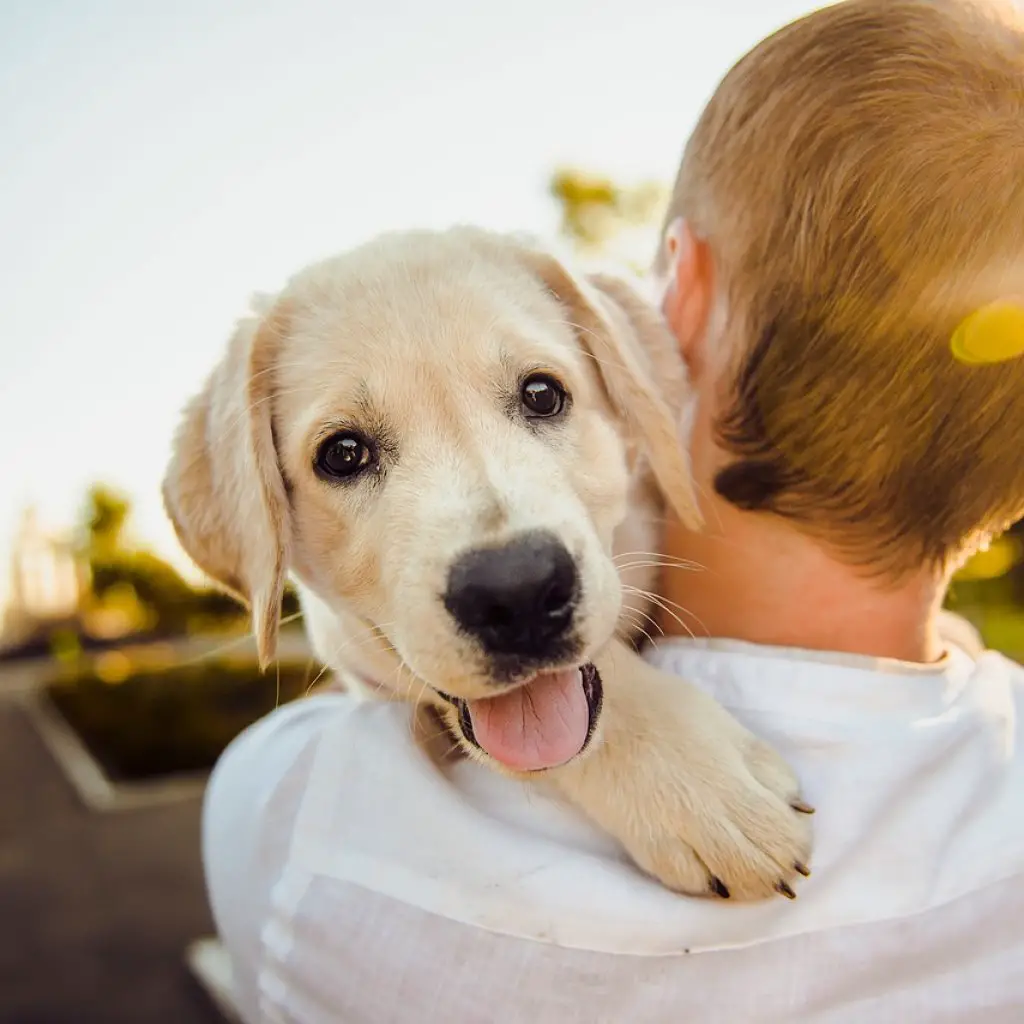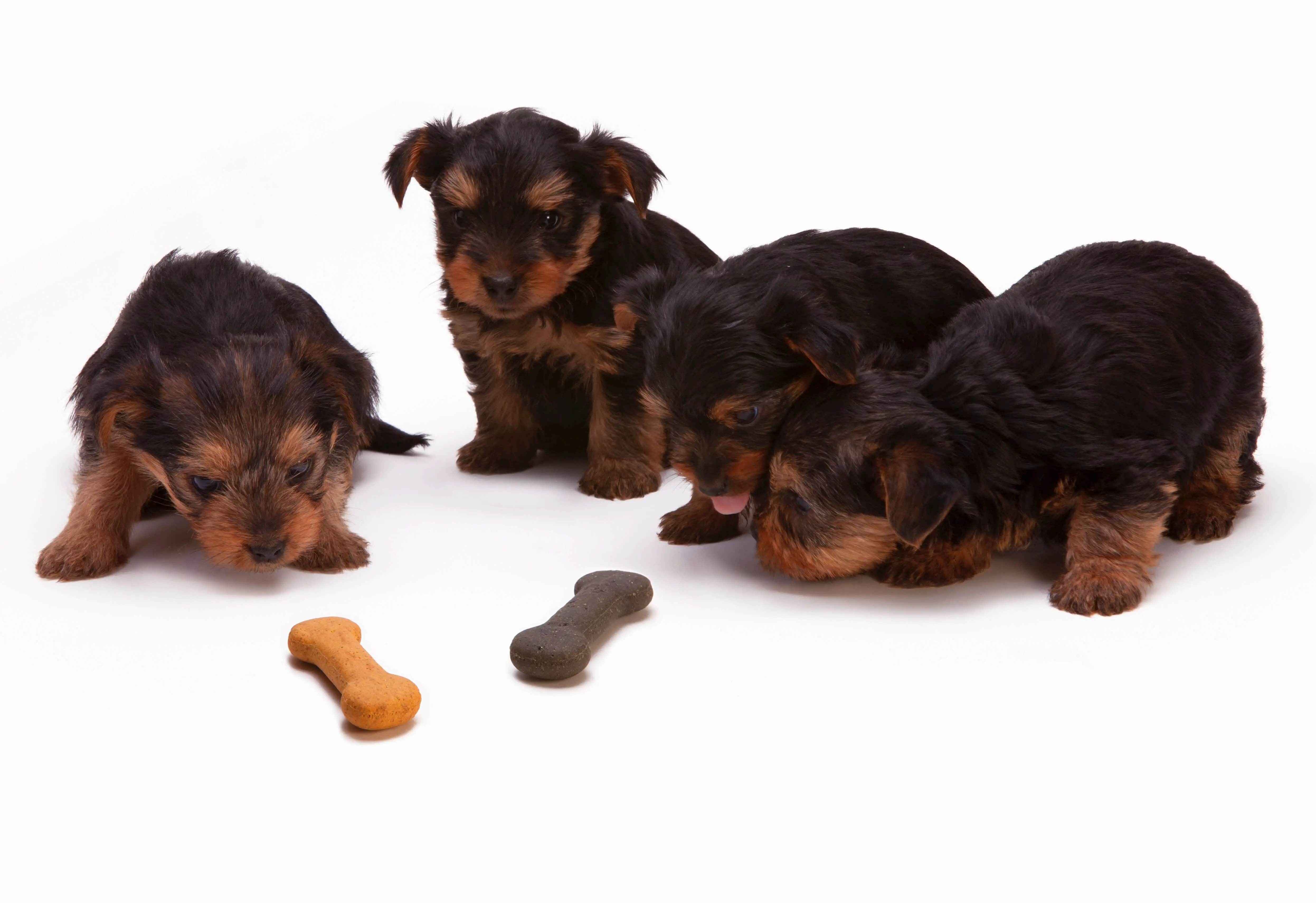Everything You Need to Know About How to Treat Separation Anxiety in Dogs
 Everything You Need to Know About How to Treat Separation Anxiety in Dogs
thegearhunt.com
Everything You Need to Know About How to Treat Separation Anxiety in Dogs
thegearhunt.com
Almost everyone has experienced for themselves the heartbreaking scene of separation anxiety in dogs, or they know someone who has. It never feels good to walk away from your beloved pup when they have that desperate, frightened look in their eyes, and you can see that they are already starting to panic knowing that you are about to leave them alone in the house. In a perfect world, you could take your pup with you everywhere you go; but unless you’re one of the lucky 1% who gets to bring their dog to work that option is just a pipe dream.
Dog separation anxiety is not a life-or-death threatening scenario to either you or your pet, but feeling unpleasant and scary feelings day in and day out is not an ideal situation for any human or animal. Your dog looks to you for security, love, comfort, and guidance, and knowing that your four-legged best friend is spending all day feeling anxious and frightened is a hard thing to ignore. While every pet’s anxiety will differ in intensity, longevity, and many other variables, one thing is for certain: you want to make it stop.

What to do, then? Luckily, because dog separation anxiety is such a common issue among pet owners, there are many solutions to consider and try yourself at home. In this article, we will cover everything from purchasing your new puppy, adopting mature aged dogs, preventative training at home, and much more. So pour yourself a coffee, dog-lover, and read on to find the best solution for you and your furry friend.
Why Your Dog May Feel Separation Anxiety
Separation anxiety (SA) likely originates from a dog’s natural instinct to stay close to his or her pack for survival purposes. This is because in the wild, an animal who is shunned or left out of his or her pack and is, therefore, alone, has a much lower chance of survival. This could be due to starvation, as the animal would have a much more difficult time hunting alone than in a pack; or from the animal being attacked, since an animal alone and without the protection of his companions is a weak target for predators. This is especially important to remember when you may feel frustrated in the slow process of prevention or treatment of separation anxiety. Your pet is simply acting on instincts.
In order to understand your dog and his or her actions, you need to understand this source of the reasoning behind their behavior – it’s not a silly dog being naughty, it’s an instinctual, deep-seated fear for their survival that may be difficult for them to control. Don’t fret, though – training, conditioning, and patience with your doggo can overcome almost any obstacle.

Signs and Symptoms of True Separation Anxiety
Now, many dogs will whine a little bit when left alone, and puppies, in particular, are well-known to cry and whine nearly every time you leave them. Neither of these behaviors is necessarily defined as real separation anxiety, in fact, they are normal and natural behaviors for your pet. The definition of true separation anxiety is when your pet consistently displays disruptive and destructive behaviors.
These challenging behaviors can range from “mild” such as nonstop whining or barking to severe problematic actions like biting and clawing through doors and walls, which brings along the destruction of property or the even worse chance of self-injury for your dog. The following are several of the most common signs and symptoms of true separation anxiety:
- Your pet “tears up” the room or your home while you are away – excessively chewing or biting things that are not their toys. Think of the popular image of a dog chewing through a pillow, cushion or toilet paper roll and leaving shreds of it everywhere.
- Your pet constantly barks or whines when left alone. Remember, a little bit of whining or barking is completely normal for many dogs and puppies. However, when the barking or whining is nonstop or hysterical (perhaps enough to get a complaint from your neighbor, for example), then you know you and your pet have a problem.
- Your pet inappropriately defecates or urinates – in an area they know is strictly off-limits for that kind of behavior. For example, urinating on walls, beds, or carpets.
- Your pet claws or chews their way through doors and windows in a panic. This is a particularly heart-breaking behavior to behold because it can often look like a horror movie where your dog was hysterically trying to get out in a panic
Purchasing or Adopting Your Pet
Like many things in life, it’s always easier and preferable to prevent a problem than to have to treat it later when it manifests. If you don’t already own a dog or puppy and are thinking about purchasing or adopting a new friend, there are several key points to keep in mind.
Keep Open Lines of Communication With the Breeder
A conscientious dog breeder can take certain steps to help lay a solid foundation of good and healthy behaviors for your puppy. For example, a breeder can separate a puppy from his or her littermates for brief periods of time during the age of six to eight weeks. Before considering purchasing a puppy, be sure to ask the breeder specific questions such as these to determine whether or not your puppy had a good beginning.
Watch for Clingy Behavior
Dogs or puppies who seem to be generally anxious, worried, or clingy, have a higher chance of developing separation anxiety later. Sometimes, when a dog “velcros” to your side when you are at a breeders home, pet store, or animal shelter, it may seem like the animal is in love with you already, and therefore hard to resist. But keep in mind that a dog or puppy who is already clingy may display some unwanted behaviors later.
Rescues May Be More Prone
Dogs or puppies that are adopted from animal rescue shelters are known to have a higher than normal chance of already having or later developing separation anxiety. The reasons for this are varied, but most boil down to the simple fact that these animals may have suffered traumatic experiences with previous owners or on the streets, they likely have had much more than one owner and therefore may have abandonment issues, and that their life in the shelter may have also been unfamiliar and stressful.

Starting to worry about how to choose the best pet for you? Don’t stress! You can do a simple test, either at the breeder’s home, pet shop or animal rescue shelter, that is fairly quick and simple but can yield quick results.
- Bring an inexpensive pillow or cushion with you.
- Ask the dog owner or care provider to place the animal in a room by itself, place the pillow or cushion on the floor, and close the door for five or ten minutes. If there is a window into the room for you to watch, even better, but if not, you can simply stand outside the door and listen for any noises.
- Some activity is of course normal. The puppy or dog may explore the room, sniff at the door, whine or bark a little bit at first to see if you respond, or playfully chew on the cushion or pillow. As long as the animal remains relatively calm and settles down after a few minutes, you’re probably looking at a completely healthy pup with no underlying anxiety issues.
- However, if the puppy or dog begins to panic soon after you close the door, paces restlessly from one side of the room to the other, claws frantically at the door, chews the pillow in a panic, or hysterically whines and barks nonstop, you may be looking at an animal with a behavior challenge that is serious.
Puppies and Prevention
There are many ways you can set the stage for healthy adult life for your new puppy when you bring them home. With a little forethought and some simple measures, you can make a big difference in helping to prevent separation anxiety for your puppy. For instance, many well-intentioned new owners will inadvertently start things off on the wrong foot by shocking their puppy with far too much attention in the first few days or weeks in their new home.
Many new owners or families may adopt their new dog at the beginning of summer when the children of the house will be around to play all day, or they may take off a few days or even a week to spend with their new puppy. On the surface, spending hours and hours with your new puppy makes sense and seems the most thoughtful thing to do, to help them acclimatize to their new environment. And certainly you don’t want to ignore your new pup, by any means!
However, a little prudence (and some very difficult willpower is not cuddling your cute little puppy nonstop for the first week) will go a long way here. This is because the first introduction to your puppy’s new life shows them that you are always around to love and cuddle them. You are their pack now, and they quickly learn in their first few days with you how their new life will be.
Depending on the dog, this can bring trouble come Monday when you have to leave them alone all day to wonder where their pack went, and if you are coming back. Such an extreme swing of environment can naturally cause anxiety in an animal, especially in a new unfamiliar setting, and if your dog is pre-dispositioned to anxiety this may be the start of a serious, ongoing case of separation anxiety for the rest of their life.

There are several signs of a puppy developing separation anxiety, but it is rather tricky at first to separate these signs from normal puppy behavior. Typically, a puppy will cry, bark, whine, and perhaps scratch at the door or chew things when you leave them alone.
The difference is often only apparent in whether or not your puppy settles down after a few minutes. Ideally, you can “walk away” from the house and then peek in a window five minutes later to check on your puppy’s behavior. If they are still crying/barking/whining excessively, you may need to step it up in terms of working on gradually adjusting your pup to being alone.
If, however, your puppy has settled down to happily chew on a toy or wander around sniffing things, you probably lucked out and have a pretty well-adjusted pup on your hands.
It’s important to remember when gradually adjusting your puppy to being alone that when they do seem anxious, they are not being “bad dogs” and they are not in need of punishment. They are displaying signs of anxiety and panic simply because they don’t understand where you are going or why, and they are afraid.
Preventing and Treating Separation Anxiety at Home
Whether you have brought home a new puppy or a mature-aged dog from an animal rescue shelter, there are several steps you can take today to help prevent and treat separation anxiety. The sooner you start, the better!
Routine
If you’re a parent of a human child, you may already know that routine is one of the most important things in raising a child. It’s very similar for pets, and especially so for dogs and puppies. They feel safe and comfortable in a world that is consistent, and this almost always results in positive behaviors from your pet. Develop a schedule for your puppy or dog, whether that is a daily or weekly schedule, and stick to it as best you can.
Crate Training
Whether you have a puppy or new shelter dog, crate training will do a world of wonder for their general good behavior, and it is a particularly excellent method for preventing and/or treating separation anxiety. Always give your pup a chance to relieve themselves prior to putting them in the crate. Start out by crating your dog or puppy for short periods of time, while you are present. A great way to do this is to place your animal in the crate by your feet while you watch TV or read a book. It should only be for a few minutes the first time, and then you can slowly increase the time. Reward their good, quiet behavior by calmly praising them. After a couple of weeks, begin the process all over again – but this time, leave the room.
Appropriate Goodbyes
This point is much overlooked, but very important – limit the attention you give your furry friend before you leave the house. Making a big production of your goodbye only hurts the goal of healthy independence. The bigger of a deal you make out of leaving, the bigger of a deal it will be for them. When you leave, try saying only a quick goodbye or hug and then walk right out the door.
Regular Exercise
You probably already know this, but it is definitely crucial that your dog or puppy has a sufficient chance to exercise every day. If you’re unable to provide this for your pup, consider hiring a dog walker to stop by once a day, or every other day, to take your dog for a walk or run. Exercise will help your dog remain healthy in a multitude of ways, just like it does for humans. It relieves stress and anxiety, releases those good-feeling endorphins, keeps your dog’s muscles strong which in turn helps prevent injury, and promotes healthy behavior at home.
With a little time, commitment, and love on your part, you and your pup have every chance of a happy, healthy, stress-free life!















